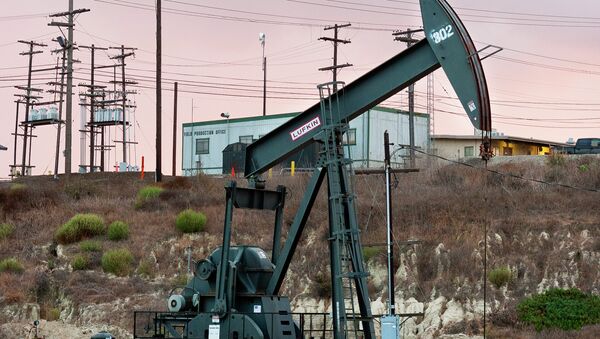MOSCOW (Sputnik) – The gap between the US crude West Texas Intermediate (WTI) and international Brent has ratcheted up significantly since January and reached $9 last week. According to Lance, such a difference between US oil prices and international ones poses a challenge for producers in the country.
"We are at a competitive disadvantage," Ryan Lance was quoted as saying by the Financial Times.
New technology, lower costs needed to keep US #oil boom alive amid #OPEC threat, lower prices http://t.co/K2G7IyMoUT via @JonathanFahey
— Alaska Shale Oil (@AlaskaShaleOil) March 24, 2015
"Our overseas competitors…are developing around the world at higher price than we're getting for the product that is of similar quality," he added.
A discount of approximately 16 percent for US oil affected the price of crude on the domestic market as early as summer 2014, according to Lance.
The ConocoPhillips head highlighted that shale oil production in the US will be uneconomic, if the price of oil reaches $40 per barrel. Meanwhile, last Friday WTI ended at about $46 per barrel.
Forecast net impact of the plunge in# oil prices on US real GDP: a gain of 0.5 — 0.7% in 2015. http://t.co/4vbT7hTCQa #IHSQuarterly #economy
— IHS (@IHS) March 24, 2015
In 1975, the United States introduced the Energy Policy and Conservation Act, banning crude oil exports except in selected circumstances, in response to the 1973 oil embargo by several Arab nations. As a result, US companies can export petroleum products (gasoline, diesel) but not crude oil.
In December 2014, only a few companies were licensed by the Bureau of Industry and Security (BIS) to export gas condensate beginning August 2015.

